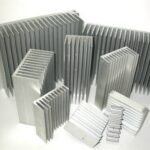Principals of surveying
- Surveying involves different operation and techniques, but all these are based on the following principals such as:
- To work from whole to part
- Location of a point of measurement from two of reference.
The work from whole to part
For any particular survey, whether it is an entire town or field, the main framework for the entire area to be surveyed consist of polygons or triangles and is set out fixing control points. The main framework is then divided suitably for detailed surveying. This principle prevents accumulation of errors in the surveying and localizes the error of measurement.
Suppose a big piece of land PQRST is to be surveyed. The control points i.e. station P, Q R, S, and T are established at each of the corners of the land. Then the rectangular area is subdivided into two triangles PQR and RPT by joining P and R. further subdivided of ∆ PQR can be done by selecting another station M on the line PR and framing triangles PQM and QMR. For surveying purpose the selecting station M, O, U and V on the different sides, the bigger area can be divided into smaller triangles as shown.
This process is called as working from whole to part. However if work is started from part to whole i.e. from ∆ MNO and survey is completed by extending the sides of the ∆ MNO, then the error in the measurement of length will accumulate and will result in the wrong calculation of area. If we adopted the method of working from part to whole, small error increase and thus becomes uncontrollable at the end. This will have an adverse effect on the precision of survey.
Location of a point by measurement from two points of reference.
Here two points are selected in the field and distance between them is measured. The relative position of the other points in the field can be from located from these two reference points.
For example: from know position of P and Q, the position of a new point ‘R’ is fixed or located by measurement any of the following:
- By dropping a perpendicular from R to PQ.
- A perpendicular RC can be dapped on the line AB.
- The location of S is determined by perpendicular distance RS and PS or as.
- By measuring the distance PR an QR
- By measuring the distance QR and angle PQR
- By measuring the angles PQR and QPR.



